Ecosistema Urbano envisions public bioclimatic domes for the future West Palm Beach waterfront
By Justine Testado|
Friday, May 5, 2017

Related
Madrid and Boston-based architecture practice Ecosistema Urbano had the winning design concept in the Shore to Core design + research competition, which will help West Palm Beach in Florida evolve into a more adaptive city in the next 20 to 30 years. The firm's winning proposal, Open Shore, is a comprehensive plan that takes into account the various changing needs of the city. With various public amenities, one notable feature of their proposal is the garden bioclimatic domes — possibly being the first bioclimatic domes in the U.S. to be publicly accessible.
Check out the proposal in more detail below.
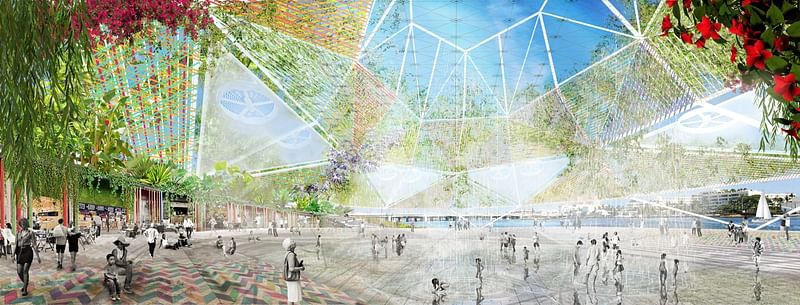
Project summary: “This proposal considers the city as a balanced and connected human ecosystem in which the whole is greater than the sum of its parts. Challenges are addressed and opportunities are developed in each of the specific proposals and, in the greater picture, the relation and integration between each new proposal and the existing city is carefully considered.
This project imagines the future West Palm Beach as a dynamic and inclusive downtown where activities and spaces are closely interwoven, providing access to a new urban waterscape, enhancing the city’s connection to the lagoon and bringing infinite possibilities of urban culture, economic development and leisure. In this vision, the waterfront plays a key role as the most representative and attractive space, and the Banyan Hub becomes a forward-thinking epicenter for urban reactivation.”

“The new waterfront hosts a wide array of outdoor activities and public spaces that enhance the urban experience and multiply the possibilities of interaction with the water. The project takes into consideration the needs of youth and elders alike in order to make a positive impact on the city as a whole and create a healthier living environment for all residents and visitors.”
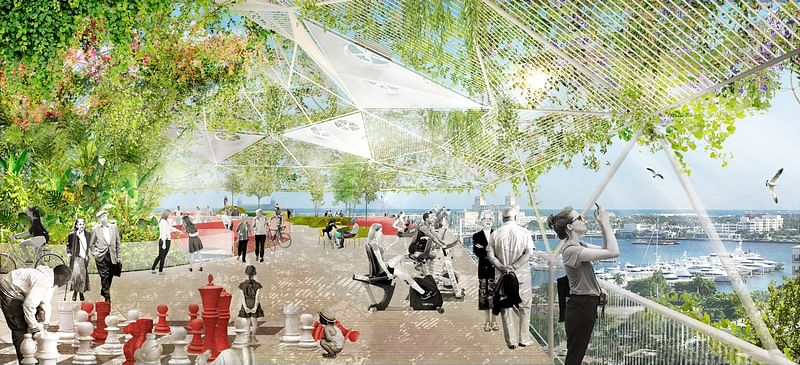
“The ecological and resilient design proposed here allows people to enjoy a more comfortable environment all year round: by coordinating natural elements and bioclimatic devices, each space will be characterized by a specific microclimate matched to the activities that will take place there. This will also help reconnect people to nature and to the uniqueness of the Lake Worth Lagoon. This climatic comfort and range of activities will foster social interaction, making the downtown more active and appealing.”

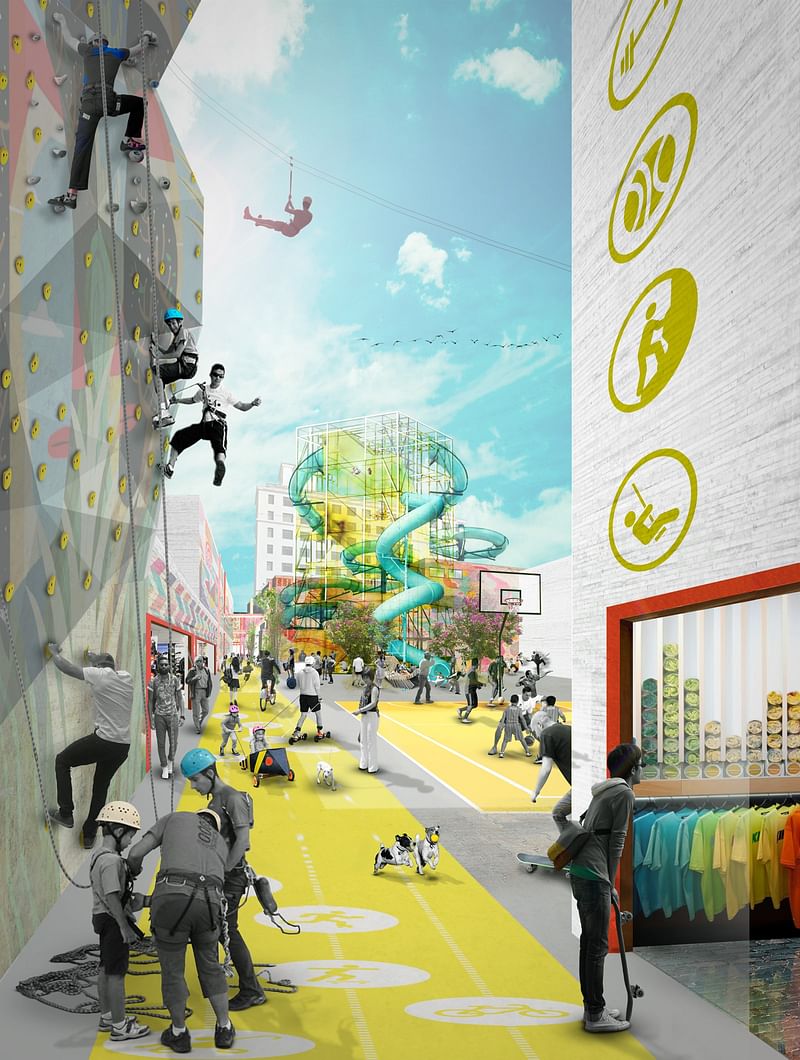
“The alleyways will undergo a rapid activation process ranging from temporary interventions to the development of permanent structures and spaces to host new programs. Walkability, security and comfort will be the first priorities to be addressed by means of active and passive climatic mitigation, new waste disposal and lighting systems, etc. Activities will disperse later into adjacent public spaces and buildings, and these revamped ‘passageways’ will become thematic routes connecting different parts of the city.”


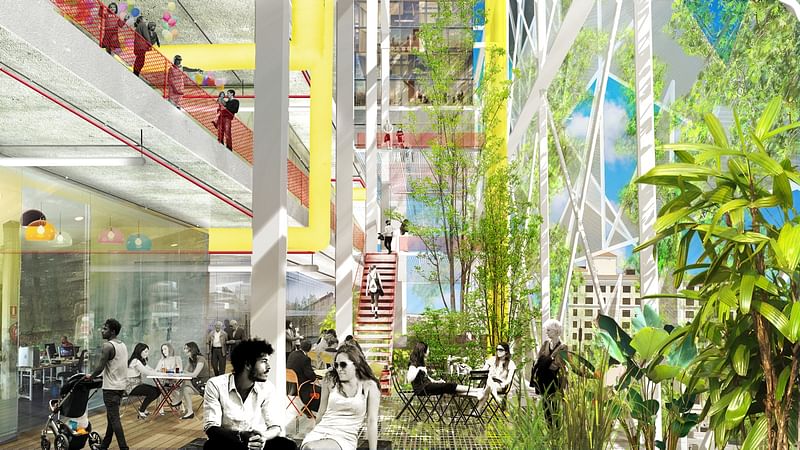
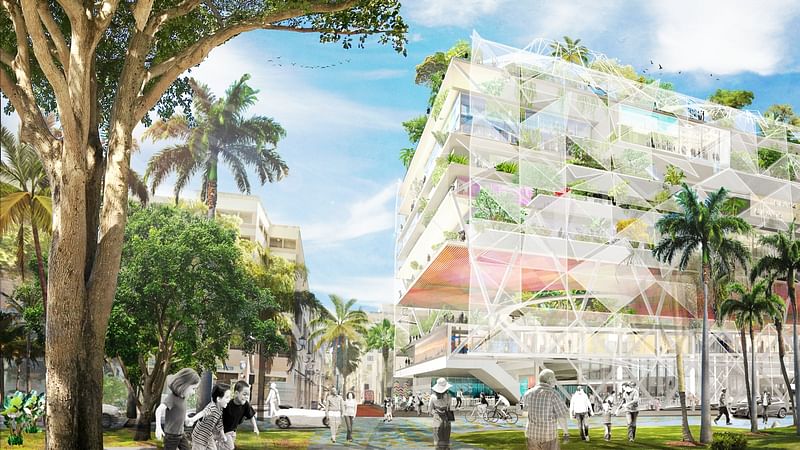
“The former [Banyan Hub] garage is reimagined as a new focal point for activities in downtown. It will be open to the public day and night, from the ground floor to the public roof terrace. It will have an active presence in the city, attracting business and talent to create knowledge, cultivate culture and foster innovation. Its flexible configuration will allow different uses to coexist and evolve in time, and its design will ensure pleasant environmental conditions all year round while reducing the environmental impact and management costs.”


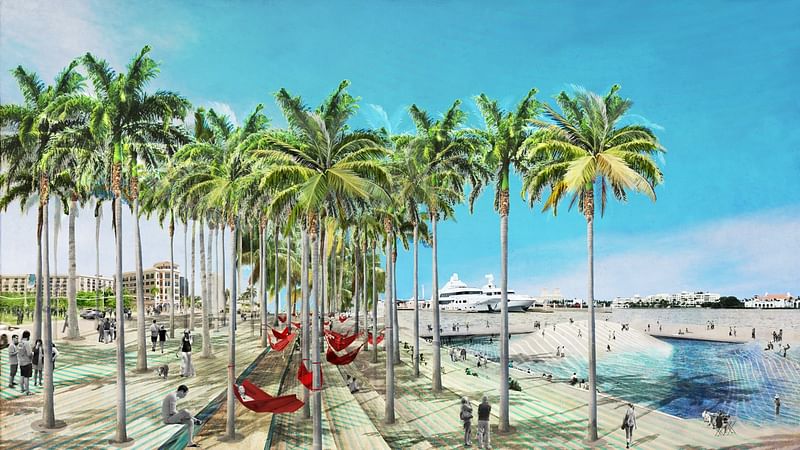
“The Great Lawn, already a central part to the city’s life, will become the ‘urban living room’ of West Palm Beach, a place to celebrate big civic events and at the same time enjoy routine activities like resting, meeting, eating or even working in the comfort of a well equipped and conditioned public space. This space will keep a wide, green yet durable esplanade at the center, while adding a shaded and fresh environment around it and two new singular plazas providing an innovative relation between public space and water.”
You can read Ecosistema Urbano's full proposal here (PDF), or see the rest of the top Shore to Core proposals in the link below.
Ecosistema Urbano team: Principals: Belinda Tato and Jose Luis Vallejo; Marco Rizzetto, Carlos León, Antonella Milano, Luisa Zancada, Jorge Toledo, Marta Muñoz, Pablo Santacana, Lola Pouchin, Maria Vittoria Tesei, Andrea Bertrán, Ana Patricia Maté, Lucía De Retes Cascales, Cristina Rodríguez, Elizabeth Kelleher, Lorena Tselemegkou, Luana Scarpel, Silvia Sangriso, Daniela Menendez, Julia Casado, Constantino Hurtado, Andrés Walliser.
Images and text courtesy of Van Alen Institute, Shore to Core design + research competition.


Share
0 Comments
Comment as :